All issues

Volume 26, Issue 1
Displaying 1-8 of 8 articles from this issue
- |<
- <
- 1
- >
- >|
-
Toichi OKADA1991Volume 26Issue 1 Pages 1
Published: February 25, 1991
Released on J-STAGE: February 26, 2010
JOURNAL FREE ACCESSDownload PDF (124K) -
Towards the Josephson ComputerShinya HASUO1991Volume 26Issue 1 Pages 2-9
Published: February 25, 1991
Released on J-STAGE: February 26, 2010
JOURNAL FREE ACCESSThis paper describes recent progress of Josephson integrated circuit technology. The progress has been rapid since the junction material was changed from lead-alloy to niobium. It is now feasible to make logic circuits with a few thousand gates and memory circuits with a few thousand bits. The speed of these circuits is much faster than that of semiconductors. Although the size of the circuits is not so large, we can make whole components necessary for Josephson computers. Next step is to install these components in a closed cycle refrigerator, and to demonstrate its high-speed performance.View full abstractDownload PDF (3257K) -
Kozo OSAMURA, Rikuo OGAWA1991Volume 26Issue 1 Pages 10-16
Published: February 25, 1991
Released on J-STAGE: February 26, 2010
JOURNAL FREE ACCESS“Glossary of Terms Relating to Superconductors” is enacted as JIS-H7005-1991. The content and the history till the establishment are commented. Two hundred and forty-nine terms relating to the field of superconductivity are classified into nine class and their meanings and definition are given in this JIS. The background of JIS and new movement of international standardization are explained. This JIS was translated into English and is now used as a base material for international standardization.View full abstractDownload PDF (1490K) -
Shigehiro NISHIJIMA1991Volume 26Issue 1 Pages 17
Published: February 25, 1991
Released on J-STAGE: February 26, 2010
JOURNAL FREE ACCESSDownload PDF (101K) -
Toshio OGATA1991Volume 26Issue 1 Pages 18-29
Published: February 25, 1991
Released on J-STAGE: February 26, 2010
JOURNAL FREE ACCESSMetals and alloys are commonly used as structural materials for cryogenic applications, because those materials are reliable, less expensive, weldable and so on. In this paper, author reviews mechanical properties, fracture and deformation behavior of structural materials of metals, and also introduces a testing procedure of mechanical test at liquid helium temperature.View full abstractDownload PDF (3399K) -
Akira TOMINAGA1991Volume 26Issue 1 Pages 30-36
Published: February 25, 1991
Released on J-STAGE: February 26, 2010
JOURNAL FREE ACCESSPerformance of regenerator used in refrigerator is discussed in terms of thermoacoustics. Thermoacoustic theory results in two types of heat flux. One is due to isothermal reversible process and it contributes to heat-pumping effect. The other is due to irreversible process and it corresponds to regenerator loss. Limiting lowest temperature is independent of heat capacity of regenerator matrix. Large amplitude of pressure and small phase-difference between oscillations of pressure and velocity decrease regenerator loss. Refrigeration power is maximized at some frequency, where the loss is 50% of ideal case. External work required for refrigerator is composed of isothermal reversible part and irreversible one corresponding to dissipation of energy. Ratio of irreversible work to reversible one increases as pressure amplitude increases, Local COP of regenerator is independent of heat capacity of regenerator matrix, Some methods of achieving higher efficiency are discussed.View full abstractDownload PDF (1087K) -
Yong-kweon KIM, Makoto KATSURAI, Hiroyuki FUJITA1991Volume 26Issue 1 Pages 37-45
Published: February 25, 1991
Released on J-STAGE: February 26, 2010
JOURNAL FREE ACCESSFundamental characteristics of levitation-type linear actuators using Y-Ba-Cu-O high-Tc superconductors are studied theoretically and experimentally. Two types of actuators, both with the levitation using the Meissner effect (Meissner levitation), are studied. They are (1) driven by the force produced by the Meissner effect (Meissner driving), and (2) driven by the Lorentz force (Lorentz driving), respectively. The Meissner levitation has such an advantage that stable levitation is achieved without any control or external input energy except cooling. The magnetic flux distribution and the driving mode of the actuator with the proposed Meissner driving are analyzed numerically. Its operational features are compared with those of several other driving methods, namely, the Lorentz driving and the electrostatic driving. In experiments, the actuator with the Meissner levitation and the Meissner driving is fabricated using Y-Ba-Cu-O superconductors. The levitating force and the driving force are observed to be 200 and 25mgf, respectively. It is found that the magnetic penetration of the superconductors degrades the both forces and the driving of the slider is not succeeded. The actuator with the Meissner levitation and the Lorentz driving is also fabricated. It is found that this actuator has sufficient forces to drive the light slider. The levitating force and the driving force are found to be 10 and 3mgf, respectively. The acceleration of the slider is measured to be 3.5m/s2.View full abstractDownload PDF (2291K) -
Koichi NARA, Hideyuki KATO, Masahiro OKAJI1991Volume 26Issue 1 Pages 46-50
Published: February 25, 1991
Released on J-STAGE: February 26, 2010
JOURNAL FREE ACCESSThe problem of a thermocouple under a static magnetic field is discussed. The results reported until now are surveyed and an experimental condition to be taken to get a reliable result is proposed. Following the proposal, the magnetic field dependence of the thermopower (relative Seebeck coefficient) of Au+0.07 at.% Fe vs. normal silver thermocouple was measured between 20K and 40K under the magnetic fields of up to 8T. The increment of the thermopower reached about 10% at its maximum at 20K under 8T and decreased monotonously with temperature.View full abstractDownload PDF (715K)
- |<
- <
- 1
- >
- >|